In the wild, it’s hard to say for sure if alligators, crocodiles, and caimans immediately eat capybaras. These unusual combinations of animal friends have been observed in various settings, from a pelican hitched a ride on a turtle to a goose that spends its days following a dog. Why do these creatures get along so well, and don’t they immediately turn into predators and prey? It’s often about context and necessity.
In captivity, where food is abundant and alligators are not in survival mode, they might bond with a capybara since they are not hungry. These reptiles are known to keep an eye on their surroundings, which could also help in keeping an eye out for predators. However, in the wild, a capybara might be too big for some reptiles to swallow, leading to a standoff rather than a feast.
Do Alligators Eat Capybaras?
Drawing from personal experience and expertise in observing wildlife, I’ve witnessed some of the most unlikely friendships in nature. Photos and videos often capture these moments, leaving us to speculate on the reasons behind these behaviours.
However, no one can always say for sure what these animals do or why they do it. Before we delve into these relationships, it’s important to talk about the many factors at play, such as environment, hunger levels, and individual animal temperaments.
Table of Contents
Do Why Don’t Alligators Eat Them?
- They’re unable to twist their heads sufficiently backward while giving rides to capybaras.
- Regarding Caymans, the situation is such that either the Cayman is too diminutive for a fully-grown capybara, or it simply lacks appetite. In other circumstances, the cayman does indeed consume the capybara, resulting in its demise.
- The true explanation for Capybaras’ relaxed nature around creatures like Caymans is their limited cognitive capabilities – their brains aren’t particularly complex. Put simply, they lack significant intelligence.
Similarly for Manatees, the absence of natural predators means they don’t experience emotions like fear or anger. This is why they tend to approach humans without hesitation.
3 Reasons Why Alligators, Crocodiles, And Caimans Don’t Always Eat Capybaras In The Wild
It’s important to notice that alligators, crocodiles, and caimans do not always eat capybaras in the wild. While there are plenty of examples of these species coexisting, they occasionally become prey, but it’s not a guaranteed state of affairs.
Here are several factors why a crocodilian may avoid consuming capybara in their natural habitat.
Reason 1: They Have A Different Range From Alligators
A key factor as to why American alligators don’t eat capybaras is their different habitat range. The American alligator is only likely to run into a capybara in the wild under very rare circumstances.
The alligator’s range stretches from the coast of North Carolina to the middle of Texas, whereas the capybara is natively found in South America. There is, however, a small, thriving population of capybaras sighted in North-central Florida, south of Cape Coral.
Despite this overlap, it’s highly unlikely they’ll come into contact due to the slow approach and physical distance maintained between their primary habitats, which is a reason they typically don’t eat each other.
Also Read: DO ALLIGATORS GO IN SALTWATER
Reason 2: They’re Hard To Swallow
Capybaras, being thick-bodied animals that can weigh as much as an adult human woman, are literally a mouthful for predators like crocodilians. Despite their incredibly fatty skin, which might seem tasty due to the fat, it’s not always an appetizing substance in its raw, unappetizing state. Their body composition, characteristic of oversized rodents, makes them tough to consume.
Note: The short hairs, long teeth, and ability to bite aggressively when provoked make capybaras less than ideal prey. While herbivores and seemingly defenseless, they can put up a fight, making them a challenging target for crocodilians. In many cases, these predators find it’s not worth the work to attack capybaras when there is easier prey available.
Reason 3: They’re Good Company
The last reason why crocodiles, alligators, and caimans may not eat capybaras is that they make good neighbours. Capybaras are notoriously chill and get along with different animals in the wild, displaying their social nature. They enjoy the company of other animals, often seen taking naps in the midday sun when it’s at its highest.
These creatures sleep through most of the day on riverbanks, basking in the sun alongside unlikely friends, becoming perfect napping buddies even with potential prey species. Their role in the ecosystem extends to being on the lookout for danger, ready to raise an alarm with a distinctive barking noise that the group can hear and respond to.
This behaviour helps to protect them from bigger predators, like anacondas and jaguars, making them valuable allies in the animal kingdom.
2 Reasons Why Alligators, Crocodiles, And Caimans Don’t Eat Capybaras In Captivity
In captivity, the rules for animals are different from the wild, often leading to alligators, crocodiles, and caimans getting along with different species like capybaras. One can notice in aquariums and large tanks that fish, which are normally prey in the open ocean, coexist peacefully, which makes captivity different.
There are a few things that influence this behaviour. In a controlled environment, crocodilians might befriend a capybara, showcasing a stark contrast to their natural instincts in the wild. This unique dynamic in captivity demonstrates how environment and circumstances can alter the natural interactions between species.
Reason 1: They’re Never Hungry
In nature, driving factors like survival and hunger dictate why wild animals hunt, always looking to fill their bellies. Alligators, known to eat anything from ducklings to other animals’ offspring, act differently in captivity, where they are well-fed. This lack of hunger changes their behaviour towards potential prey. The theory goes that without the need to hunt, adversaries can become friends.
Since meals are provided regularly, the tensions are low, allowing for bonds to form. In this environment, Crocodilians can become surprisingly friendly with a capybara, showcasing a unique aspect of animal behaviour influenced by the conditions of captivity.
Reason 2: They Might Be Lonely
A lesser-known factor in captivity that might provoke an animal to behave differently than when in the wild is loneliness. Animals can get bored and easily succumb to self-destruction in a captive environment. For crocodiles and alligators, often seen fighting over territory in the wild, the reasons for aggression diminish in captivity.
The addition of a capybara can provide much-needed company in their otherwise solitary life within confinement. One could imagine how a large rodent like a capybara could become a friend, a plus in an environment devoid of the usual stimuli these predators encounter in nature.
What Is A Capybara?

The capybara, often unheard of in traditional school curriculums, is one of the more unusual animals you’ll learn about. It holds the title of the largest living rodent in the world, resembling a giant version of guinea pigs and chinchillas.
An adult capybara can be up to 4 feet long and 2 feet tall, and weigh as much as 100 lbs. Native to South America, these fascinating creatures have also been spotted in Florida. They are incredibly social, often found in groups of 10 to 20 but can live in gatherings of up to 100 individuals. While considered threatened, they are often hunted for their meat, hides, and the grease from their fatty skin.
Capybaras are large, semi-aquatic mammals that spend most of their lives near bodies of water. Their density makes them skilled swimmers, able to hold their breath for up to 5 minutes and dive efficiently. As herbivores, they primarily graze on grasses and aquatic plants. This background information is crucial to speculate whether they form a main food source for crocodilians. Given the
What Animals Do Eat Capybaras?
While wondering which animals eat capybaras, besides the occasional alligators, crocodiles, and caimans, there are several predators in South America that commonly prey on them. Jaguars, cougars, and anacondas are among the top predators, with vultures and ocelots also partaking.
Note: Despite being sociable and tough, capybaras have their fair share of natural predators. Surprisingly, the largest volume of threats comes from humans, who hunt them for various purposes. This diverse range of predators reflects the capybara’s place in the ecosystem as a significant prey species.
Capybara Predators
1. Caimans
Among the common predators of the capybara, the caiman stands out. These large reptiles, closely related to alligators and crocodiles, are native to South America and predominantly inhabit freshwater environments like rivers, lakes, and swamps.
Caimans vary in size, with some species, like the black caiman, reaching impressive lengths of up to 20 feet. Their animal stalking skills, combined with razor-sharp teeth and strong jaws, make them formidable predators, capable of catching even an adult capybara. This ability positions them as one of the more adept predators within their shared ecosystem.
2. Green Anaconda
Another common predator of the capybara is the green anaconda, a large snake native to South America, particularly in tropical rainforests near bodies of water like rivers and swamps. These massive snakes can grow up to 30 feet long, rivalling even caimans in size.
Green anacondas hunt mostly at night when their prey is active. They are commonly found in water, where they can spot a potential meal and quickly approach with their powerful jaws and constricting coils. Once they grab their prey, they use their strength to suffocate it, making them one of the most formidable predators in their ecosystem.
3. Puma
Pumas, also known as South American cougars or mountain lions, are large cats found across North America and South America. Sporting short fur of a brownish-red colour, these big cats typically weigh between 100-200 pounds. Known for their muscular legs that enable them to run fast, excellent night vision, and skill in stalking prey, pumas are also adept climbers and can leap 15 feet high.
While they consume both plants and animals, their preferred diet consists mostly of deer, rabbits, rodents, birds, and fish. It might come as a surprise, but pumas will eat capybaras when other food sources are scarce in their area, showcasing their adaptability as predators.
4. Jaguar
Jaguars are among the most feared predators in the animal kingdom, having been worshipped by humans for centuries due to their large size and incredible hunting prowess. These beautiful big cats possess powerful jaws and sharp claws, making quick work of their prey. Interestingly, one of their favourite meals is the capybara, highlighting their status as apex predators within their ecosystems.
5. Ocelot
Although smaller than other big cats, ocelots still reign as apex predators in their environment, often sharing hunting grounds with the larger jaguar. These stealthy hunters are adept at navigating through shallow rivers and lakes, areas frequented by animals like capybaras.
Note: Their method of stealthy stalking through the dense jungle undergrowth allows them to get close enough to pounce on their prey. With their powerful claws and teeth, they can effectively kill their victim, showcasing their prowess as skilled hunters in their habitat.
6. Harpy Eagle
The harpy eagle, one of the largest and most powerful birds of prey, is a true killer bird. With its impressive size and a wingspan of six feet, it embodies strength that can lift objects weighing four times its body weight. As formidable predators in the wilds of South America, they are known for preying on animals larger than typical birds prey upon, such as sloths and monkeys. Interestingly, they are also known to eat young capybaras, showcasing their ability to adapt their hunting strategies to various prey sizes.
7. Crab-Eating Fox
The crab-eating fox, although not one to mess with a full-size capybara, will hunt the smaller, young ones. Found across South America, particularly in Brazil, Uruguay, and Argentina, this fox gets its name from its diet which includes crabs, crayfish, other invertebrates, and even plants. During the wet season, it will primarily eat these aquatic creatures, but young capybaras can become a part of its favourite food when available, demonstrating the adaptability of its diet.
8. Humans
Among all carnivorous predators that hunt capybaras, the greatest is arguably the human. These docile animals often found in groups are sought for their meat, which is tender and tastes similar to pork. They have been hunted for centuries in South America, where in some cultures, capybara meat is considered a delicacy, served on special occasions like weddings and festivals, especially in countries like Venezuela.
Beyond being a source of food, their pelts and hide are used for clothing and other items. While their population remains stable in some areas, in others, they have disappeared due to overhunting. Efforts to farm and raise them aim to reduce stress on wild populations, highlighting the complex relationship between humans and these animals.
How Do Capybaras Protect Themselves?
Capybaras, native to South America and often found near ponds, lakes, rivers, and thick forests with dense vegetation, have developed various strategies to protect themselves from carnivorous animals in their habitat. Though they typically live for eight to ten years in the wild, their survival from baby to adulthood is challenged by predation.
They often move in groups of 10-30, which aids in their defence. When they sense danger, an alert warning bark from one member of the group prompts the others to escape to water where they can hide until the threat has passed. This group dynamic is effective against many predators on land, but it also draws a closer look at aquatic predators like alligators, curious about what eats these large rodents.
FAQs
Who eats alligators?
Despite their size and strength, alligators are not invincible. The biggest predator they face is Man. In the wild, big cats like leopards and panthers can occasionally kill and eat these reptiles. Additionally, large snakes have been known to damage both alligators and crocodiles, proving that even apex predators have adversaries.
Will crocodiles eat capybara?
Crocodiles, known as fierce predators, often share waters in South America where capybaras reside. While they are certainly capable, it’s not well-known if they consistently refuse to eat capybaras, but there are instances where they get along well with these large rodents.
What animal can eat a capybara?
Jaguars and people often hunt adult capybaras. Young capybaras face threats from smaller predators like ocelots, harpy eagles, and anacondas. Additionally, large, alligator-like reptiles such as caimans are also known to prey on them.
What do alligators eat?
Alligators are opportunistic feeders; their diets vary based on prey species that are abundant and easily accessible. Juvenile alligators often consume insects, amphibians, small fish, and invertebrates. Adult alligators have a more rough diet, including snakes, turtles, various mammals, and birds.
Is A capybara a pig?
Originally, it was thought that alligators might eat capybaras, a sort of rodent closely related to cavies and guinea pigs. However, considering the water habitats in Africa, where hippos dwell, and in the Americas, the diet of alligators is more diverse and not focused solely on capybaras.
Conclusion
In conclusion, the question of whether alligators eat capybaras is multifaceted, with various factors influencing this predator-prey relationship. Alligators, being opportunistic feeders, have a diverse diet that adapts based on the availability and accessibility of prey. The natural habitats of alligators and capybaras do overlap in certain regions, particularly in South America, which suggests potential interactions.
However, the coexistence of these species, along with the social nature of capybaras and the specific dietary preferences of alligators, often results in a complex ecosystem dynamic. While alligators are capable of preying on capybaras, especially the young or vulnerable ones, it is not a predominant aspect of their diet. This relationship exemplifies the intricate balance within natural ecosystems, where predator and prey dynamics are influenced by a variety of environmental and behavioural factors.


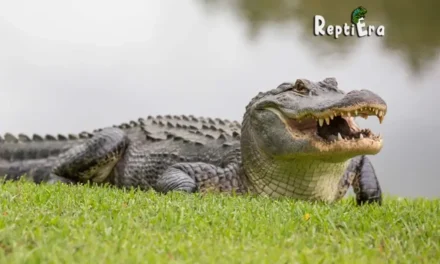
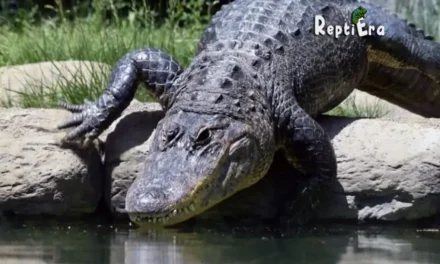
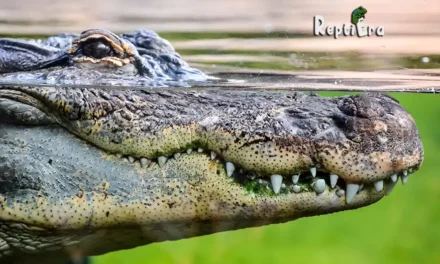
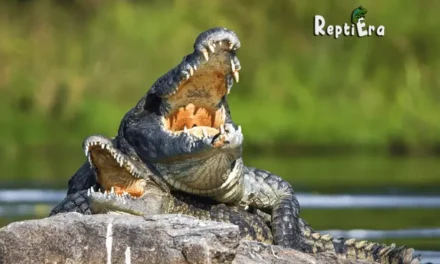
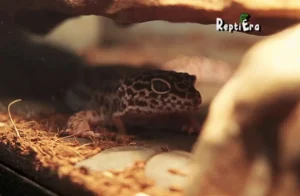

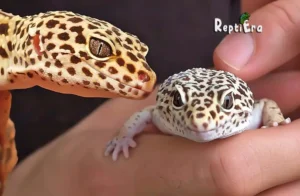
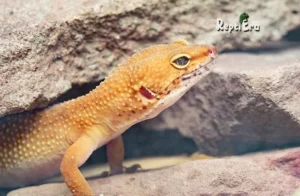
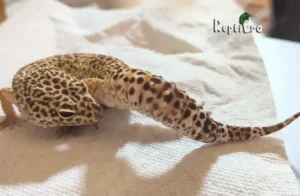
Your point of view caught my eye and was very interesting. Thanks. I have a question for you.
Thanks for sharing. I read many of your blog posts, cool, your blog is very good.
Pretty section of content. I just stumbled upon your web site and in accession capital to assert that I acquire in fact enjoyed account your blog posts. Any way I抣l be subscribing to your augment and even I achievement you access consistently quickly.
Your article helped me a lot, is there any more related content? Thanks!
Your point of view caught my eye and was very interesting. Thanks. I have a question for you.
Thanks for sharing. I read many of your blog posts, cool, your blog is very good.
Thank you for your sharing. I am worried that I lack creative ideas. It is your article that makes me full of hope. Thank you. But, I have a question, can you help me?
Thank you for your sharing. I am worried that I lack creative ideas. It is your article that makes me full of hope. Thank you. But, I have a question, can you help me?